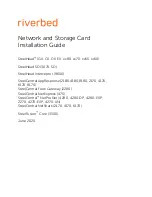
■
Precautions when executing auto-tuning
● Auto-tuning may not be executable depending on the process. In that case, the system
returns to the original parameter operation.
● After auto-tuning is completed, the respective optimal values are stored for proportional gain
[Kp], integral time [Ti], and derivative time [Td]. Before execution, it is necessary to specify
appropriate values (e.g. lower limits) within the respective setting ranges.
● After auto-tuning is complete, store optimal values for proportional gain [Kp], integral time
[Ti], and derivative time [Td]. Be careful that the stored values are not rewritten.
● During auto-tuning, the output values for Kp, Ti and Td are calculated by measuring changes
to process values (PVs) when manipulated values (MVs) are set to the upper limits, as well
as changes to process values (PVs) when manipulated values (MVs) are set to the lower
limits, so that process values (PVs) will be increased or decreased in accordance with the
respective set point values (SPs).
● Changes to manipulated values (MVs) of auto-tuning are completed in three sessions (upper
limit output - lower limit output - upper limit output) in the fewest times possible. If the auto-
tuning progress does not change from 0 after multiple sessions, shorten the control interval
Ts and retry auto-tuning.
■
Operation actions
● [S4] through [S4+29] are initialized when the execution condition is switched on.
● If the parameters for proportional gain [Kp], integral time [Ti], and derivative time [Td] are all
0 at the start of PID operation, they are initialized to [Kp]=1, [Ti]=0 and [Td]=0 respectively,
and operation is continued.
● When the auto-tuning request signal is switched on, bit 1 of [S1] (auto-tuning completion
flag) and [S4+10] (auto-tuning completion code) are cleared.
● Set point values for auto-tuning are operated with the value of the set point value (SP) minus
the bias value as the target value.
● After auto-tuning is correctly completed, values are stored for the calculated Kp, Ti and Td
multiplied by the correction coefficients specified by [S4+7] through [S4+9].
10.12 EZPID (PID Operation: PWM Output Available)
WUME-FP7CPUPGR-12
10-53
Summary of Contents for FP7 Series
Page 2: ... MEMO 2 WUME FP7CPUPGR 12 ...
Page 18: ... MEMO xviii WUME FP7CPUPGR 12 ...
Page 52: ... MEMO 1 34 WUME FP7CPUPGR 12 ...
Page 104: ... MEMO 2 52 WUME FP7CPUPGR 12 ...
Page 123: ...3 9 ANS AND stack WUME FP7CPUPGR 12 3 19 ...
Page 125: ...3 10 ORS OR Stack WUME FP7CPUPGR 12 3 21 ...
Page 129: ...3 11 PSHS Push stack RDS Read stack POPS Pop stack WUME FP7CPUPGR 12 3 25 ...
Page 190: ...3 26 JP LBL Jump Label 3 86 WUME FP7CPUPGR 12 ...
Page 239: ...Name Description SR8 ER 3 46 ST ST ST ST ST ST Data Comparison Start WUME FP7CPUPGR 12 3 135 ...
Page 246: ... MEMO 3 142 WUME FP7CPUPGR 12 ...
Page 258: ... MEMO 4 12 WUME FP7CPUPGR 12 ...
Page 304: ... MEMO 5 46 WUME FP7CPUPGR 12 ...
Page 321: ...Name Description ER 6 7 DIVFP2 Division FP2 Compatible WUME FP7CPUPGR 12 6 17 ...
Page 348: ... MEMO 6 44 WUME FP7CPUPGR 12 ...
Page 388: ... MEMO 7 40 WUME FP7CPUPGR 12 ...
Page 438: ... MEMO 8 50 WUME FP7CPUPGR 12 ...
Page 450: ... MEMO 9 12 WUME FP7CPUPGR 12 ...
Page 520: ... MEMO 10 70 WUME FP7CPUPGR 12 ...
Page 602: ... MEMO 11 82 WUME FP7CPUPGR 12 ...
Page 622: ... MEMO 12 20 WUME FP7CPUPGR 12 ...
Page 650: ... MEMO 13 28 WUME FP7CPUPGR 12 ...
Page 1160: ... MEMO 18 66 WUME FP7CPUPGR 12 ...
Page 1188: ... MEMO 19 28 WUME FP7CPUPGR 12 ...
Page 1220: ... MEMO WUME FP7CPUPGR 12 ...
Page 1221: ... MEMO WUME FP7CPUPGR 12 ...
















































